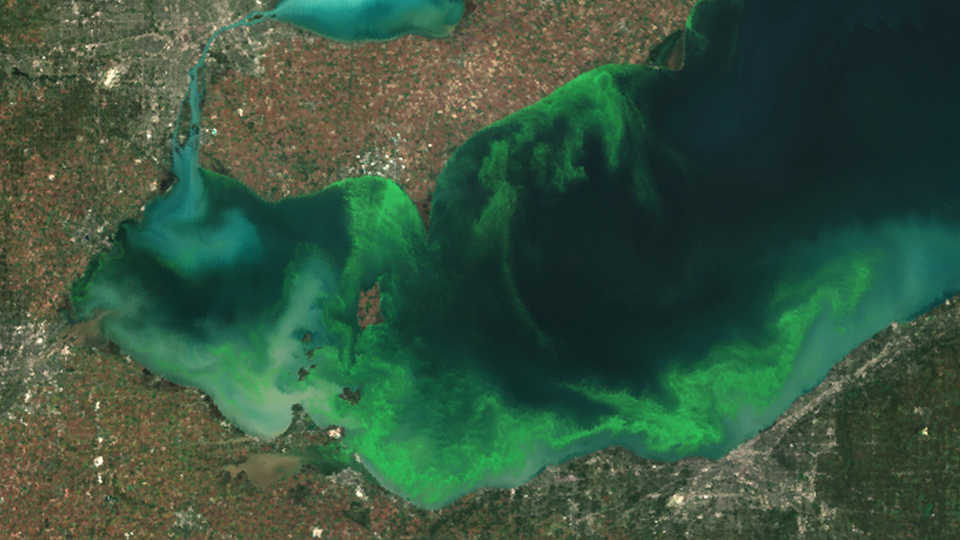Science News
Cyanobacteria on the Rise

It’s green, it’s gooey, it’s gloppy. You may be familiar with algae, the common eukaryotic organism growing in oceans, lakes, estuaries, and streams, but, as we’ve written previously, many algal blooms harbor hidden toxins.
“Algal blooms dominated by cyanobacteria have become a major problem worldwide,” said Noel Aloysius of Ohio State University in an announcement of recent findings at the American Geophysical Union (AGU) meeting held in San Francisco earlier this month. The presentation, co-chaired by Aloysius and Hans W. Paerl of the University of North Carolina at Chapel Hill, took a comprehensive look at algal blooms in Lake Erie, which reached unprecedented concentrations during this past summer. Historically, swamps along the western shores of Lake Erie provided a natural filtering mechanism for the lake’s waters. Today, agricultural row crops have replaced 75% of that swampland, and those crops receive heavy fertilizer treatment. These changes result in less filtration and more pollution.
Cyanobacteria are photosynthetic bacteria that live synergistically in many communities of algae, and they are on the rise due to warming temperatures, increasing rainfall, and escalating agricultural development. They possess compounds that are harmful to humans, causing liver and brain toxicity. The most common type of cyanobacteria in areas impacted by algal overgrowth is microcystis, a coccoid that thrives on the nitrogen- and phosphorus-rich fertilizer runoff near agricultural areas.
The rising cyanobacteria levels in Lake Erie could portend more dire consequences. Scientists are learning lessons from Lake Taihu, a lake providing water to over 20 million people in China’s most rapidly growing economic province of Jiangsu. In 2006, a water treatment plant overwhelmed with algal growth was shut down immediately when chemical efforts to treat the water instead increased the level of toxins (due to endotoxins released by cyanobacteria destroyed during the chemical intervention). The Lake Taihu region now relies heavily on delivered water as safety questions remain. This incident underlines the importance of addressing Lake Erie’s imbalance, and of acting quickly.
So how do we reduce algal growth and keep our waterways safe and potable? Cyanobacteria have been around for nearly two billion years and aren’t leaving soon, but Aloysius and Paerl described advances in fighting back the bloom. The biggest challenge that remains, Paerl said, is raising awareness and encouraging use of sustainable strategies. Understanding rain patterns, responsibly applying fertilizer, and planting vegetative buffer zones can keep nitrogen and phosphorus out of our water and away from the hungry cyanobacteria that lurk there. Other options such as ultrasonic treatment, mechanical surface mixing, and applying chemical solutions have met with mixed success, but more research is needed.
Image: Lake Erie, 2011, NOAA